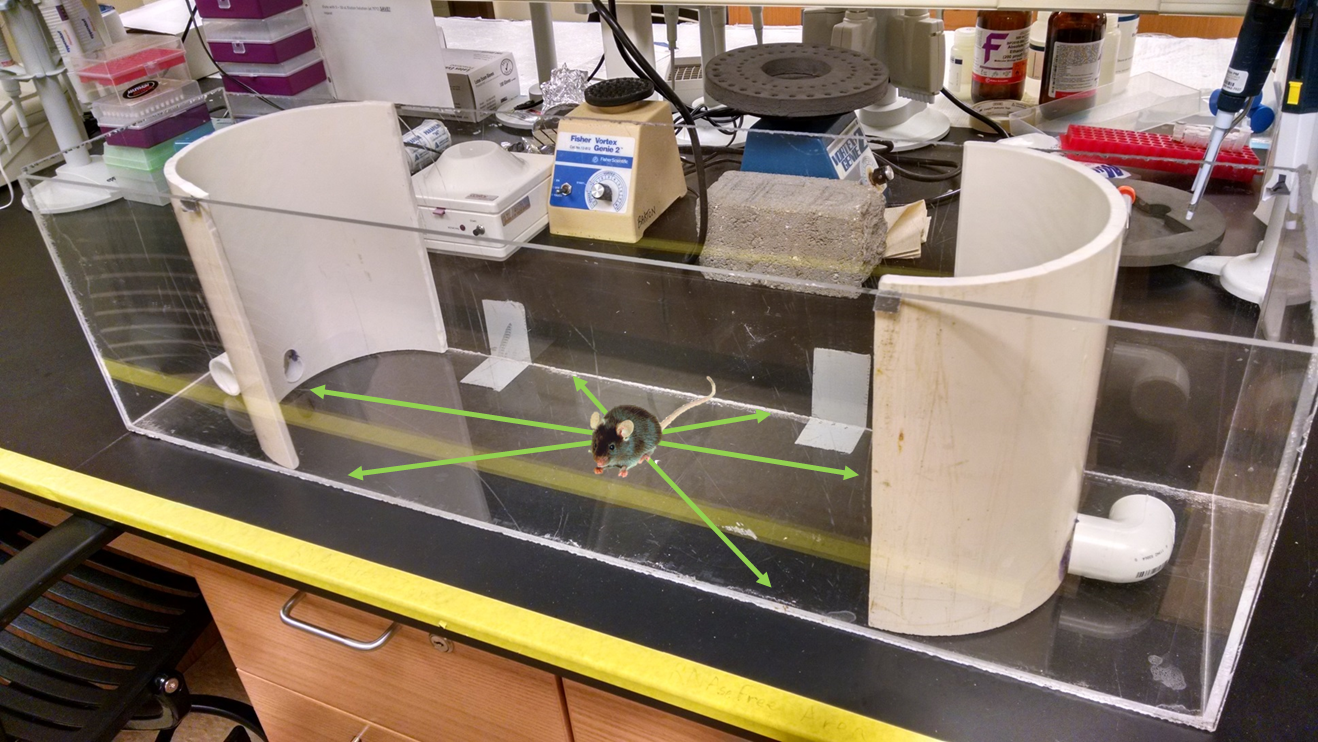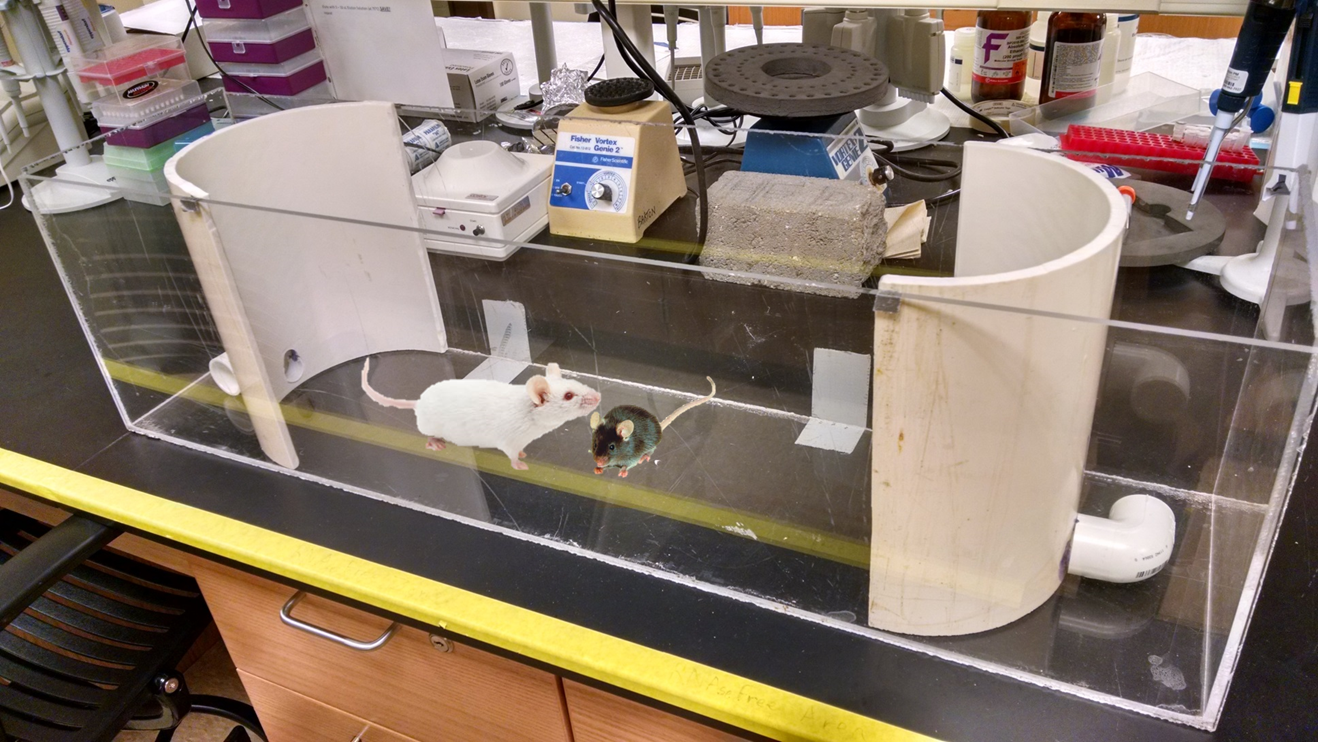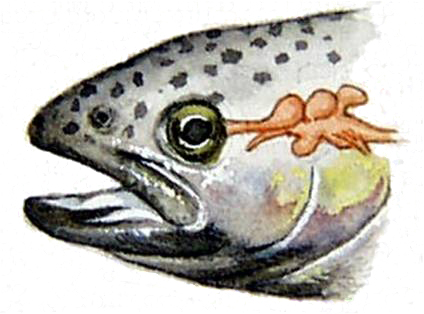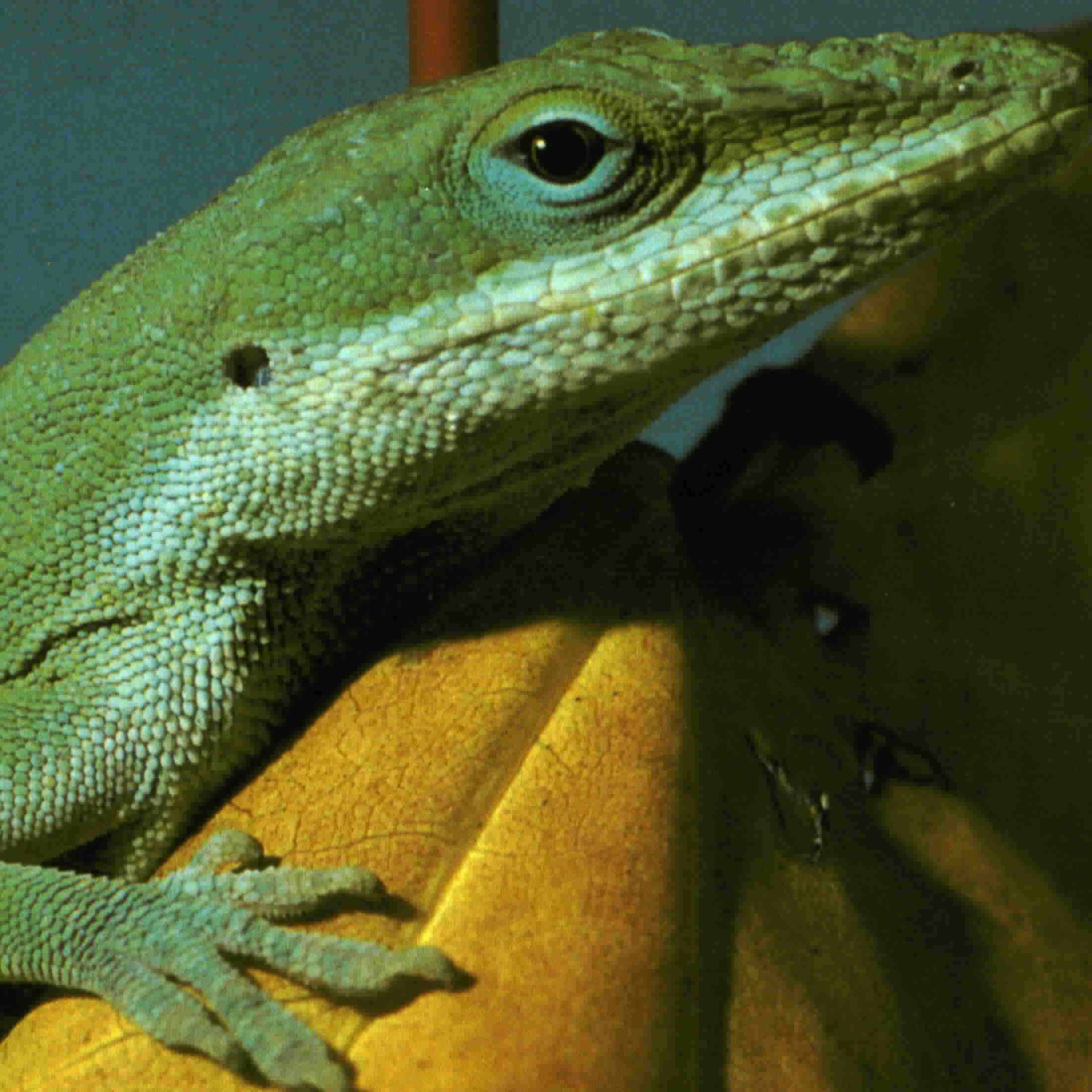Research
in the
Summers' Laboratory of Molecular Neuropsychoecoendochemistry


 |
The Stress-Alternatives Model (SAM) is an animal model of anxiety, depression, and decision-making under stressful conditons. The SAM is capable of discriminating intensity of anxiety via simple a decision-making routine. The SAM apparatus is an oval open field (OF) arena with escape portals only large enough for smaller test mouse or rat, allowing for retreat when mice are subject to attacks by a larger novel aggressive mouse or rat. Social interactions that transpire in the SAM apparatus result in an even division of responses, with stable escaping and submissive behavioral phenotypes established by the second day of interaction. The addition of a conditioned stimulus (CS, tone) during the period of isolation prior to aggressive social interaction of the two animals (unconditioned stimulus) results in fear conditioning, but only for submissive (social defeat) animals. The effects of increasing the intensity of anxiety in the SAM coincide with progressive dramatic increases in plasma corticosterone, as well as BDNF and neuropeptide S (NPS) gene expression in the CeA; culminating in the highest expression during social defeat for animals that do not escape. Escape alleviates the neural and endocrine responses to the stress and anxiety associated with OF and aggression, which are also ameliorated by anxiolytic treatments, such as exercise or CRF1 antagonism. Nevertheless, it is important to consider that both submissive and escaping mice receive significant levels of aggression, and that neither the amount nor the intensity of aggression determines the gene expression of those groups, nor which behavioral phenotype is adopted.
|
 NIH R15 MH125306 Sex Differences in the Neurobiological Significance of Orexin Stress Signaling $427,255 2021-2024
NIH R15 MH125306 Sex Differences in the Neurobiological Significance of Orexin Stress Signaling $427,255 2021-2024
NIH R15 MH104485 Amygdalar Orexin Modulation of Affective Disorders $426,477 2015-2017
Brain Research Special Issue: Orexin/hypocretin receptor antagonists for the treatment of addiction and related psychiatric disease:
What are the steps from here?
Review: Summers CH, JDW Yaeger, CD Staton, DH Arendt, TR Summers 2020 Orexin/hypocretin receptor modulation of anxiolytic and antidepressive
responses during social stress and decision-making: potential for therapy. Brain Research 1731: 146085: 1-15
Robertson JM, MA Prince, JK Achua, RE Carpenter, DH Arendt, JP Smith, TL Summers, TR Summers, and CH Summers 2015 Nuance and behavioral
cogency: How the Visible Burrow System inspired the Stress-Alternatives Model and conceptualization of the continuum of anxiety.
Physiology and Behavior 146: 86-97
Smith JP, MA Prince, JK Achua, JM Robertson, RT Anderson, PJ Ronan, and CH Summers 2016 Intensity of anxiety is modified via complex
integrative stress circuitries. Psychoneuroendocrinology 63: 351-361

Carpenter RE and CH Summers 2009 Learning strategies during fear conditioning Neurobiology of Learning and Memory 91: 415-423
Summers TR, TL Summers, RE Carpenter, JP Smith, SL Young, B Meyerink, TZ Orr, DH Arendt, and CH Summers 2017 Learning and CRF-induced
indecision during escape and submission in rainbow trout during socially aggressive interactions in the Stress-Alternatives Model
Frontiers in Neuroscience 11: 515: 1-13
Carpenter RE, B Sabirzhanov, TR Summers, TG Clark, J Keifer and CH Summers 2023 Anxiolytic reversal of classically conditioned /
chronic stress-induced gene expression and learning in the Stress Alternatives Model. Behavioural Brain Research
114258: 440: 1-10
Celerity of Response - Advantages of a Faster Stress Response: Anolis carolinensis

Research Interests
Our laboratory focuses on the impact of social and environmental stressors on molecular, neural and endocrine responses to influence adaptive behavior and activities like learning, coping, developing social rank relationships, biological rhythms, reproduction, and social interaction. Of special interest are how and why individuals differ, and how responses are characterized temporally. The investigations include the connection between molecular, neural and endocrine responses and variability in the magnitude and way in which individuals respond to and cope with stress behaviorally. We have recently developed a new model that includes aggression, learned escape and conditioned submission. We are interested in elucidating the mechanisms by which experience modulates the responsiveness of neural and hormonal stress responses. We think it is important to relate molecular genetics, physiology and anatomy to behavior, ecology and evolution.






 NIH R15 MH125306 Sex Differences in the Neurobiological Significance of Orexin Stress Signaling $427,255 2021-2024
NIH R15 MH125306 Sex Differences in the Neurobiological Significance of Orexin Stress Signaling $427,255 2021-2024

